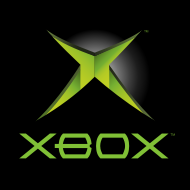At long last, I wrote that FUSE driver for the Microsoft Xbox DVD filesystem. I will hopefully get around to releasing it, just as soon as I can test it a little bit more. I am not completely confident with the new driver but that might be because the filesystem that I was using to test the program appears to have a number of problems and might be corrupted (or it could very well be that Xbox 360 games use a slightly different filesystem layout than Xbox games, or that I’m not correctly handling 32-bit thresholds on large filesystem images). When I started studying other smaller Xbox filesystems, things seemed to go quite smoothly.

So did I finally find some samples of the fabled XMV format? Yes! At long last. Far and away, however, the Bink format appears to dominate, at least on the sample of games that I surveyed.
I found 4 Xbox games that include XMV media: Thrillville, Xiaolin Showdown, Monopoly Party, and Lego Star Wars 2: The Original Trilogy. You can find samples at the usual place. The last game on that list surprised me– Lego Star Wars is an aggressively multi-platform franchise. While the disc only encodes the intro movie as an XMV file (and in both PAL and NTSC variations), this would imply to me that versions for other platforms are encoded in that platform’s preferred SDK format, i.e., MPEG-2 for PS2, THP or H4M for GameCube, and who knows for Windows. Typically, cross-platform games take the easy way out using portable middleware solutions like Bink.
A little bird once told me that XMV was on the horizon for Xbox multimedia and that it would be straight ASF files with WMV2 video and MS ADPCM audio. If that’s true, then it looks like the WMV2 puzzle was solved just in time. These XMV files certainly are not stock ASF files. Curiously, the most notable signature is ‘Xbox’ spelled, ahem, in little endian notation in bytes 12-15: ‘xobX’. Width and height are encoded at bytes 20-23 and 24-27, respectively. I see sample rate data at bytes 40-43. I tried to find framerate data by comparing the headers of the PAL vs. NTSC Lego SW demo movies. I was hoping to find fields with 50 or 25 for PAL and 60 or 30 for NTSC. No such luck. However, I have also read that the movies are 29.97 fps, so the framerate data might be encoded as floating- or fixed-point numbers.
The Lego Star Wars 2 game has lots of interesting stuff to peruse. Since it is LucasArts software, it should be no surprise that human-readable scripts play a role. Indeed, there is a whole directory of scripts, such as this simpler file scripts/Attack.scp:
state Base {
Conditions {
if GotOpponent == 1 goto StartAttack
}
Actions {
BreakFormation
}
}
state StartAttack {
Conditions {
}
Actions {
KeepWeaponOut
SetState "Attack"
}
}
state Attack {
Conditions {
if GotOpponent == 0 goto Base
}
Actions {
EngageOpponent "goalrange 1.5" "firerange 3"
}
}
Thrillville is also from LucasArts and has various markings to indicate that the Lua language is involved, as in other LucasArts titles such as Grim Fandango.
Lego Star Wars 2 also contains a large number of .wavm files. These could be headerless PCM or ADPCM data. What was that FFmpeg incantation for converting headerless, raw PCM to a container format, manually specifying parameters?
One more item– Call of Duty 3. This uses a format with the extension XBV and it begins with the signature ‘AFMV’. I don’t have many other clues on it, but I have thrown together a MultimediaWiki page on the matter and uploaded some samples, as is customary.
Related Posts: